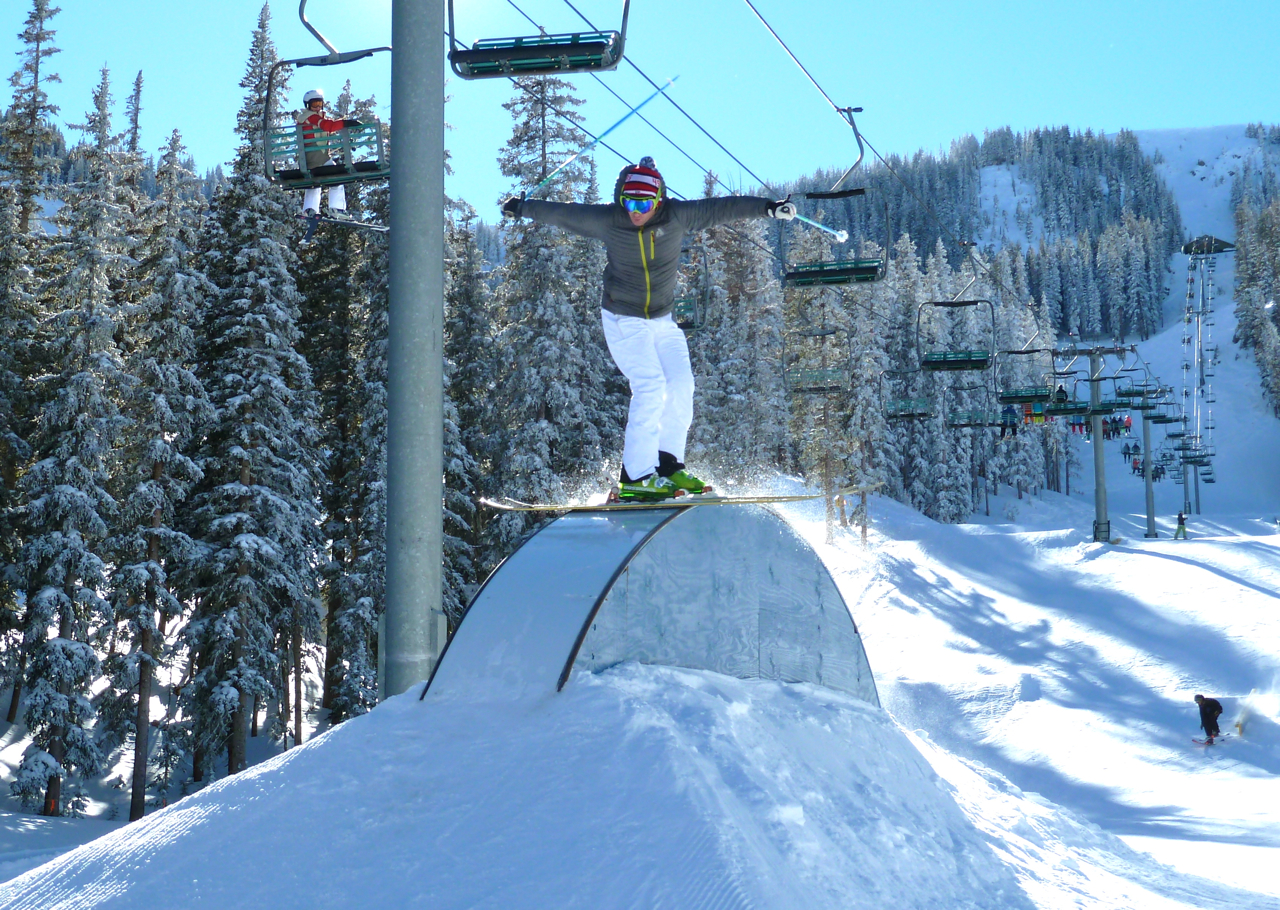I tend to dress for warmer afternoons when spring skiing, so I layered with only a t-shirt underneath the MicroTherm hoody for warmth, and a Gore-Tex shell for wind and precipitation protection. Once winter rolled back around, I was comfortable in 15-30˚F temperatures by layering with a thin long sleeved base layer, a wool mid layer, the MicroTherm hoody, and my shell.
I was comfortable in the colder morning, as well as in the afternoon, when winds blew in flurries of snow and graupel. When hiking the ridge, the jacket had me overheating a bit, but ventilated nicely when I opened the underarm pit zips on the shell I was wearing over the MicroTherm.

This MicroTherm Down jacket became a necessity later in the summer when conducting ecological field work in arctic Alaska. Hiking 3-5 miles daily on the tundra near Pt. Barrow, I encountered wide swings in daily weather consisting of rain, snow, sleet and temperature ranges from 10-60˚F. The MicroTherm jacket provided the same instant warmth when a cold front rolled in as it did when I’d put it on to fill up at a gas station back home. It also packed easily and tightly into my pack, not taking up much space for other gear. During a near emergency encounter when a co-worker approached hypothermia, the MicroTherm hoodie was the first thing I reached for to warm him. (For what it’s worth, that co-worker showed up back home wearing a new MicroTherm hoody a month after this experience.)
In short, compared to other down layers I’ve worn, such as the Outdoor Research Hypnotic Down Jacket, The North Face Nuptse, and the Mountain Hardware Hunker down, I seemed to warm up quicker after putting on the MicroTherm hoody, regardless of my activity.
Waterproof / Breathability / Ventilation
The MicroTherm hoody features a water-repellent, windproof shell that provides excellent breathability and ventilation with the down insulation. I was particularly impressed at how windproof this jacket was. Whether hiking, skiing, sailing, or biking, I can’t say I ever noticed any wind penetrating the jacket. Despite being windproof, however, the jacket is still very breathable.
The stretch panels under both arms also enhance the breathability and airflow in the jacket—especially, of course, when the main zipper of the jacket was also opened. When layering with an outer shell, these panels work superbly with a shell’s underarm vents. Overall, I was very impressed with the placement and utility of this feature.
With a backpack, however, I did notice that I was prone to sweating under the pack on rigorous treks. This is somewhat expected since the backpack limits the jackets breathability under the pack. The real downside to down being wet, however, is that its insulation value becomes virtually worthless and does not dry easily.
The trademarked Stormrepel DWR finish offered nice protection from drizzle and snow during my first several uses, but after a month it quickly became insufficient for repelling moisture. I haven’t applied any repellency products yet, but I’d suggest waterproof down wash additive to restore water-repellency without sacrificing breathability.
Durability
The shell of the MicroTherm hoody consists of a lightweight 1.2 oz 20-denier ripstop nylon coated with a water repellent finish. The nylon has had numerous run ins with tree branches, brush, dog claws, and other miscellaneous sharp edges, with no apparent blemishes. An occasional small feather pokes through, but less often than any other down product I’ve owned (maybe once every couple of weeks) and the feathers have never exposed any sharp quills. The zippers worked exceptionally well, and I’m continually impressed with their durability and functionality despite their small size.
The only durability issue has been associated with the DWR finish. While deterioration of water repellency is somewhat expected, the jacket didn’t retain this feature for more than a couple of weeks and began to more easily acquire dirt and stains. This didn’t seem significant, however, just a good reminder that a second application of water repellency after some use to extend the life and look of the product is a good idea.
I’ve washed the jacket once with a Nikwax down wash, and it cleaned up nicely. The loft was easily restored using a tumble dryer set to low. It’s also worth noting that once dry, the down wasn’t bunched and didn’t require significant shaking and feather redistribution throughout the panels.
Packability
MicroTherm European down is highly compressible and allows this jacket to pack down into either of the two zippered side pockets. This creates a 6×6” pouch that can be easily packed, or carried by attaching a carabineer to the zipper loop. The only downside to this packing system is the zipper is single sided and becomes upside down when packed, requiring some struggling to close and reopen.
Bottom Line
The First Ascent MicroTherm Hooded Jacket combines the features of a windproof jacket with all the benefits of down, making it a versatile layering piece or a stand-alone jacket for both casual and technical applications. In my experience, it is particularly great as an instant warm up in temperatures ranging from 20-50˚F, yet is breathable enough to avoid overheating when shifting to warmer temperature settings (entering a warm room après ski, getting back in the car, starting to hike, etc.).
The only small changes I’d like to see are an improved water repellency and an elastic adjustment at the bottom of the jacket to help prevent wind or snow blowing in. Regardless, Eddie Bauer has exceeded my expectations with the First Ascent MicroTherm Hooded Jacket. Given the relatively low retail price while still featuring an excellent down fill and a technical, stylish design, this jacket is a good value and is a great choice for hiking, camping, skiing, or stepping out to start the car on a cold morning.
